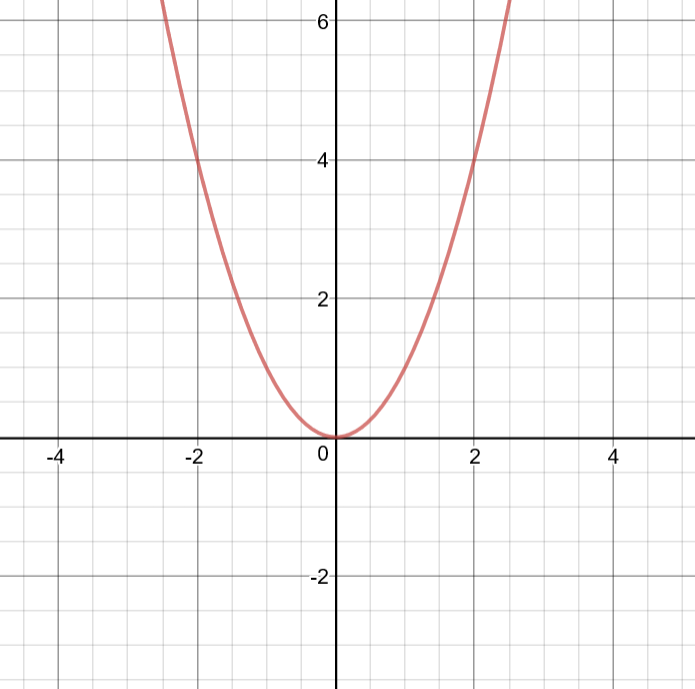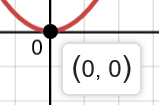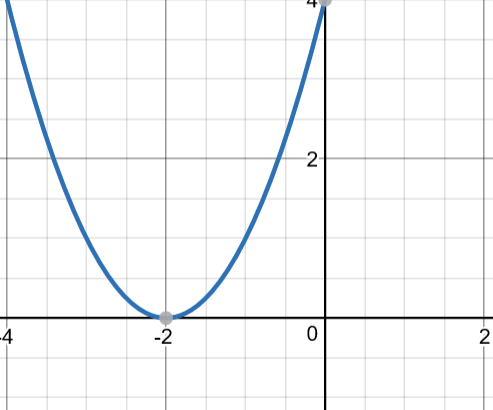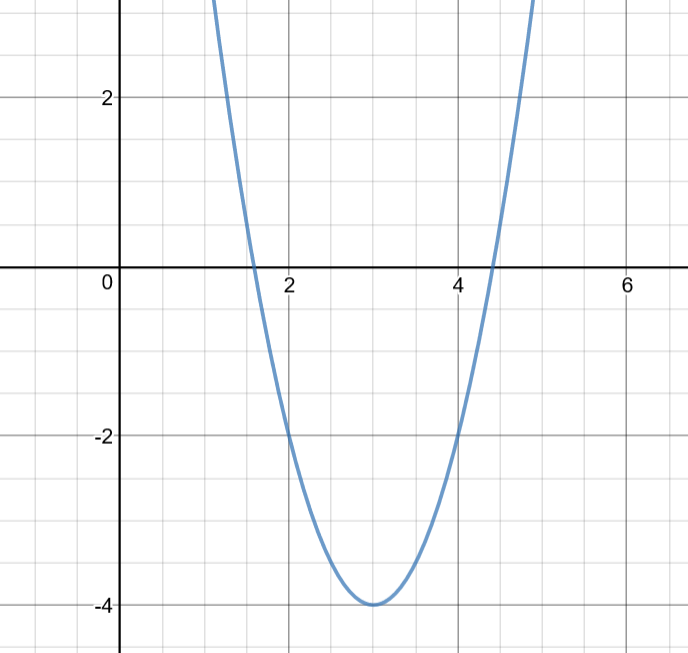***All graphs used are taken from desmos.***
Another week in Pre-Calc 11, another blog post!
Something that I’ve learned this week is about the equation
So, what exactly is this equation and what does this do?
Now, let’s do some basics. For example,
If you graph it, it will be like this:

Let’s analyze some parts…
The vertex, which is the lowest or the highest point of the graph, depending on where it is. Where, as you can see in the graph, is in (0,0)
We can also find the domain (x values) and the range (y values) with our vertex.
Always remember that our x-values are always an element of real numbers, or x ∈ R. Why? Because take note that our graph widens horizontally, and take note that if it goes on forever, then our x values can be anything.
Not the same thing goes for our range, though. As you can see, our graph has either a maximum or a minimum, depending on the equation (which I’ll go through later at Section III). And in this case, our minimum is y=0. So it means that y must be greater than or equal to zero, or y ≥ 0.

There are many points to consider such as x-intercepts, which we know as where the line crosses the x-axis or if the equation is y=0. And the y-intercept, which we know as where the line crosses the y-axis or if the equation is x=0.
And we can see that in the graph, both y and x-intercepts are (0,0).
We also need to take note of the line of symmetry.
It’s basically the line that divides the graph equally, which in this case is also x = 0.
Moving on to the main topic, what exactly is
In this blog post, we will divide them first into three sections to understand them more.
the three sections are:
I. y = x² + q
II. y = (x – p)²
III. y = ax²
Section I: y = x² + q
Let’s go briefly over this.
So what ‘q’ does in our equation is translating (or sliding, shifting,…) our graph vertically.
Just note that -q slides downwards and +q slides upwards.
i.e. comparing q = 3 and q = -3
y = x² + 3

y = x² – 3

As you can see, if our equation is y=x²+3, our graph slides upwards by 3, and if our equation is y=x²-3, our graph slides downwards by 3.
Section II: y = (x – p)²
What ‘p’ does to our graph is slightly the same as ‘q’, however it translates or shifts/slides the graph horizontally. Another thing is that this equation is very confusing, because as we are familiar to, we move to the right if it’s positive, and we move to the left if it’s negative. However, this is the exact opposite. If it’s (x-p)², then it slides to the right or positive side of the graph. And if it’s (x+p)², then it slides to the left or negative side of the graph.
i.e. y = (x – 2)² vs. y = (x + 2)²
y = (x – 2)²

y = (x + 2)²

As you can see, if our equation is y=(x-2)², our graph would translate to the right, and if our graph is y=(x+2)², our graph would translate to the left.
Section III: y = ax²
Now, this part of the equation is a lot more different the other two.
What a does in the equation is changing the wideness of the graph, and where the graph opens up, or the reflection depending on its sign.
To make sense out of it better, let’s analyze these graphs.

y = 1/2 x² (TOP)
y = -1/2 x² (BOTTOM)


y = 2x² (TOP)
y = -2x² (BOTTOM)

What we can conclude with that is if the sign (-/+) of a is positive, then it opens up, or the graph has a minimum value or “lowest point.” And if the sign is negative, then it’s opening downwards, or it reflects, or you can say that the graph has a maximum value or “highest point.”
Also, what we can conclude from those graphs is the wideness of graph. We can see that if it’s greater than zero but less than one (0 < a < 1), then our graph will be wider. And if it’s greater than one (a > 1), then the graph will be narrower.
Now, let’s try applying it to the equation y = a (x – p)² + q
So basically, the summary of what we did is:
a = changes the wideness and the direction the graph opens up. (negative reflects down, positive opens up) (0 < a < 1, wider graph) (a > 1, narrower graph)
p = translates the graph horizontally. (negative translates to the right, positive translates to the left)
q = translates the graph vertically. (positive translates upwards, negative translates downwards)
Example: y = 2 (x – 3)² – 4

Applying our skills, we know that a is 2, which means our graph will be narrow and opens up.
We know that our p value is – 3, which means it will translate to the right by 3.
We know that our q value is 4, which means it will translate downwards by 4.
That’s everything! Thank you.